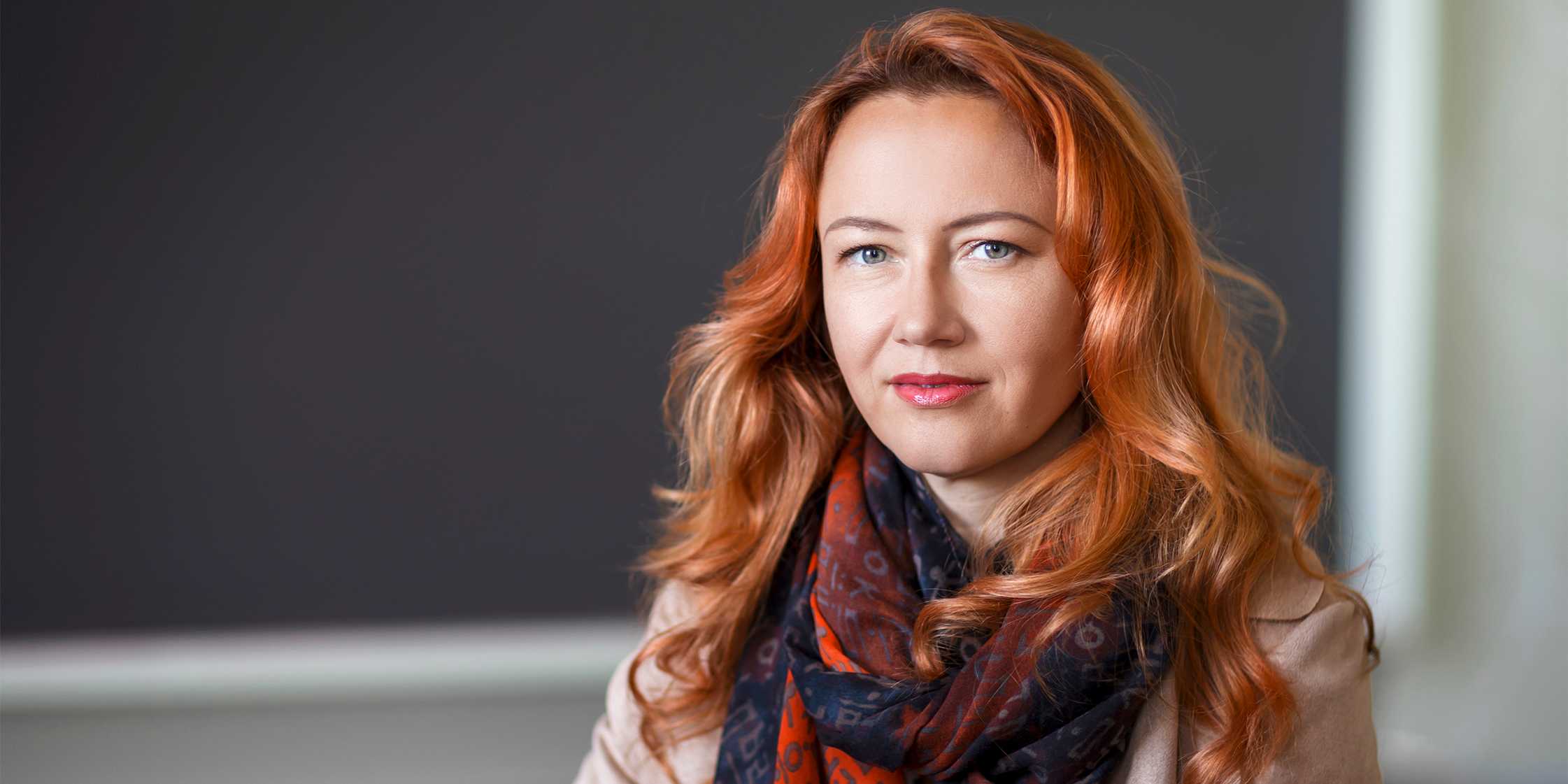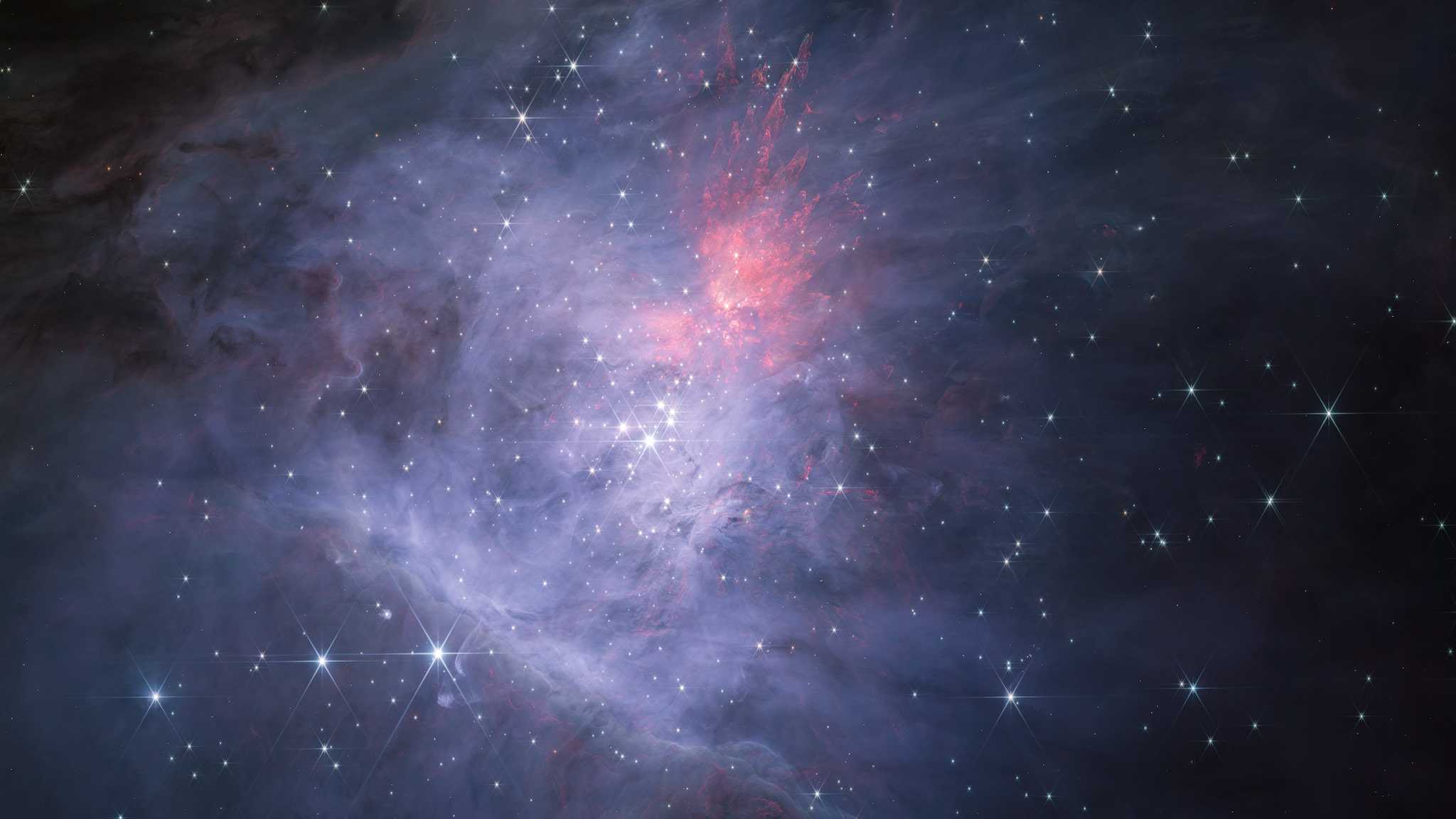Using mathematics to solve cosmic puzzles
The mathematical concepts that Svitlana Mayboroda develops can be used for all kinds of different applications – from studying the formation of stars to creating new semiconductors that save energy. For Mayboroda herself, however, the focus is on proving mathematical theorems with the aim of expanding our knowledge.

The images obtained from today's giant telescopes captivate researchers and laypeople alike. "The processes that are happening out there are taking place on unimaginable scales," says Svitlana Mayboroda, who has been a full professor in the Department since 1 August 2023. She cites the Orion Nebula – a molecular gas cloud in which new stars are born – as an example. The James Webb Space Telescope provides detailed images of the structures within the nebula. "An immense feat of modern technology," says Mayboroda. "But to be honest, we don't really know where to start with these images because they show unbelievably complicated geometric objects."
Even with the huge processing power offered by modern computers, it is not possible to compute exactly what is happening out there in the universe. "You need to know what to feed into the computer before it can be of use to us," explains Mayboroda. "This requires mathematics because, as Galileo Galilei put it, mathematics is the language of nature." Surprisingly, it is the same mathematical problems that crop up again and again. Mayboroda likens the images of the cosmic gas clouds to a fire on Earth. As humans, we can recognise a fire when we see a picture of one. "But in mathematical terms, what is it that makes a fire look like a fire?" the researcher asks. "And could you specify what is burning at what temperature and for how long if you could define some mathematical properties?"

Mayboroda is working in collaboration with astrophysicists to find out what is behind the complicated cosmic objects. "We are investigating whether certain semantic features of these geometric objects occur again and again across many images and scales, and whether these features actually describe what is happening up there," the mathematician explains. "We want to find out if we can develop a mathematical theory that will allow us to take the measurements we need to understand the structure and dynamics of the universe. Are there features that describe turbulence and shed light on how stars are formed in these clouds?" As Mayboroda explains, this is a completely new challenge that is connected to a number of notorious unsolved problems in the fields of geometric measure theory, minimisation and variational calculus. "At the same time, however, it is an exciting and abundant new world."

“We want to find out if we can develop a mathematical theory that will allow us to take the measurements we need to understand the structure and dynamics of the universe.”Svitlana Mayboroda
Like a big explosion in your head
"I don't do physics or calculations myself though," she is keen to stress. "I prove mathematical theorems." Alongside geometric measure theory, she works in the fields of partial differential equations and analysis. She is driven by curiosity, but the work can often be difficult and frustrating. She explains that you might think you are close to a solution, only to find out soon afterwards that something has gone wrong. "But as you gain more experience, you get a feeling for when things are right, so you don't get so disheartened." And the joy you feel when you solve a puzzle is always amazing: "It feels like little bubbles tingling in your head, and sometimes it’s like a big explosion."
The mathematician is clearly a thrill-seeker in her free time as well, as her fitness activity of choice for many years has been aerial silks. "It’s a piece of equipment like a trapeze or an aerial hoop and other things like that," she explains. "It’s a mix of gymnastics, climbing and dropping." In the past, she would often practise using circus infrastructure, but now she trains at the Academic Sports Association Zurich (ASVZ), which offers aerial silks as part of its programme.
Mayboroda has won numerous international awards for her work, but her career as a mathematician was by no means mapped out for her. She was born in Kharkiv in eastern Ukraine, where she showed an interest in all kinds of subjects at school before deciding to study mathematics and economics at university. When she received an offer to complete a doctorate in mathematics in the USA, she saw it as an adventure and a chance to discover a new world. She lived in the USA for almost 20 years, spending the last 13 of them working as a mathematics professor at the University of Minnesota before joining ETH in 2023.
"Again, it was a chance to discover a different world, new people, a different lifestyle, a different mathematical environment here in Europe," explains Mayboroda. The happiness she radiates when speaking about her work gives way to sadness when the conversation turns to the situation in Ukraine: "My father lives in Kharkiv. It's his home, whether there's a war or not. But the more things develop, the harder it gets. It's a huge tragedy and I try to help however I can. That's what we're all doing, whether it's on a smaller or larger scale."
A landscape from the perspective of waves
Her most notable works to date concern the topic of waves and their behaviour. Waves are ever-present in our world – in the form of water waves or sound waves, for example. From the perspective of quantum mechanics, even matter itself has the characteristics of a wave at atomic level. "One of the areas I've been focusing on with my research recently is that of waves and disorder," the mathematician explains. "At the microscopic level, most materials exhibit defects or inherent irregularities which can mean that waves behave in a completely different manner to that predicted by classical physics in the case of periodic grid structures." This means that waves can suddenly be restricted to a very small part of their original domain, even though there is no visible obstacle stopping them from propagating – like a tsunami that comes to a standstill in the middle of the ocean.

“Imagine a mountainous landscape that you need to go through. A wave sees the land differently to you. The wave can jump over certain rivers that you can't get over, but it can't squeeze into arbitrarily narrow passages.”Svitlana Mayboroda
This phenomenon is known as wave localisation. Although it was discovered in the 1950s, it proved extremely difficult to understand the mechanism of this localisation. A crucial breakthrough came in the form of a new mathematical tool that Mayboroda and her colleagues discovered. "It’s a localisation landscape that shows the material from the perspective of the wave," the mathematician explains. "Imagine a mountainous landscape that you need to go through. A wave sees the land differently to you. The wave can jump over certain rivers that you can't get over, but it can't squeeze into arbitrarily narrow passages." This localisation landscape theory makes it possible to predict the geometric properties and energy of the localised waves.
Not only does this theory allow us to understand localisation effects, it can also be applied directly in order to develop new materials and better electronic components. For example, this mathematical tool can be used for quantum simulations of LEDs, enabling targeted improvement of these energy-saving light sources. And it helps with the development of efficient, organic semiconductors for solar cells and photodetectors, which are used in devices such as smartphones. "I was really lucky that our concept found applications in physics and in the development of new components so quickly," says Mayboroda.